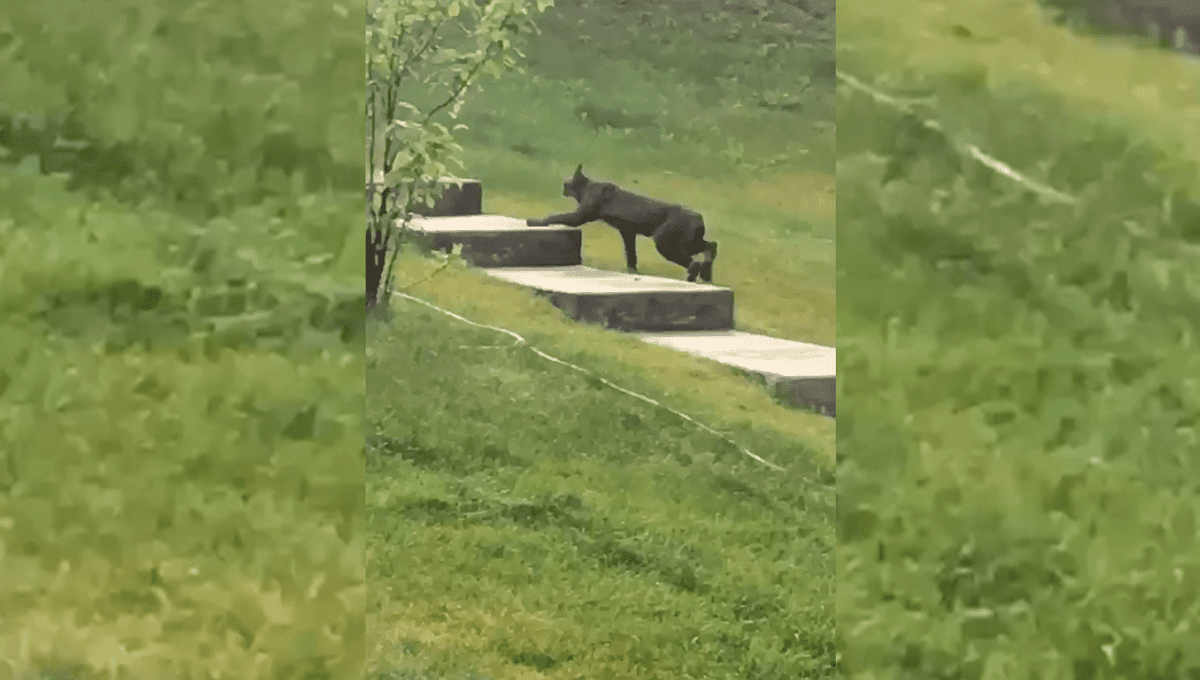
Everyone loves a surprisingly colored species, from these gorgeous black seal pups to the bright feathers on pterosaurs, the animal kingdom is no stranger to colors of all kinds, be it present in fur, feathers, or fins. Now to add to the list, an extremely rare sighting of a melanistic Canada lynx (Lynx canadensis) has been captured on camera for the first time. So rare in fact that it’s never been seen before.
Thomas Jung, a researcher at the University of Alberta filmed the feline on his smartphone in August 2020. The lynx was spotted in a residential area in the Yukon, Canada, and appeared to behave as expected, despite the noise of human activities and the sound of a dog barking in the video.
Several experts have studied the footage and confirmed it is a Canadian lynx rather than a bobcat (Lynx rufus), however, owing to the poor quality of the video footage only minor details can be seen. “It had a black coat containing whitish gray guard hairs throughout, as well as whitish gray hairs in the facial ruff and the rostrum and dorsal regions,” Jung said in a statement.
Canadian lynx range mainly across Canada and Alaska, bordering some northern US states. These lynx that live in the northern section of the range feed almost exclusively on snowshoe hares (Lepus americanus) while the population in the south has a more varied diet.
Within the lynx genus coat color has very little variation between species compared to other members of the Felidae family, lynx are known to exhibit a seasonal variation where the coat changes from reddish brown in the summer months to more silver gray in the winter. This helps them blend in with the snow when catching their prey.
Melanism is relatively common among cats with about a third of all felid species reported to have a melanistic polymorph. Melanism is caused by an increase in melanin production which is the pigment responsible for color. Famously, black panthers are just melanistic leopards or jaguars. These kinds of genetic mutations are interesting to researchers as they can be beneficial to the animal (adaptive) or have a negative effect (maladaptive).
Unfortunately for this lynx, the team thinks that the dark coat could put the animal at a disadvantage when hunting hares against a snowy landscape.
The paper is published in Mammalia.
Source Link: First-Ever Melanistic Canadian Lynx Caught on Camera